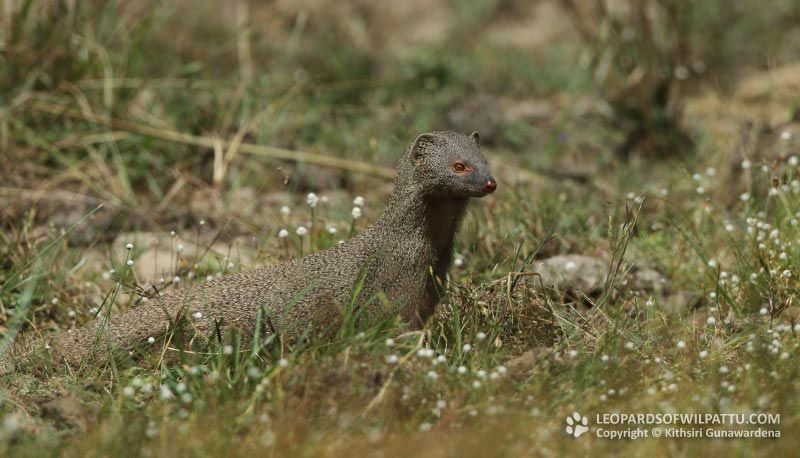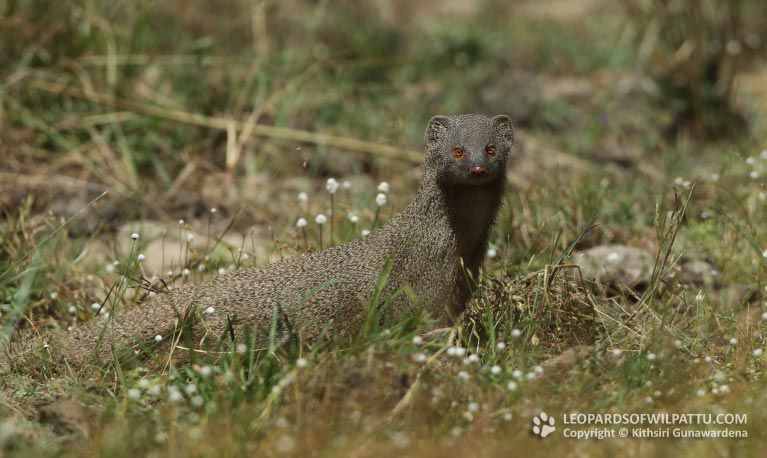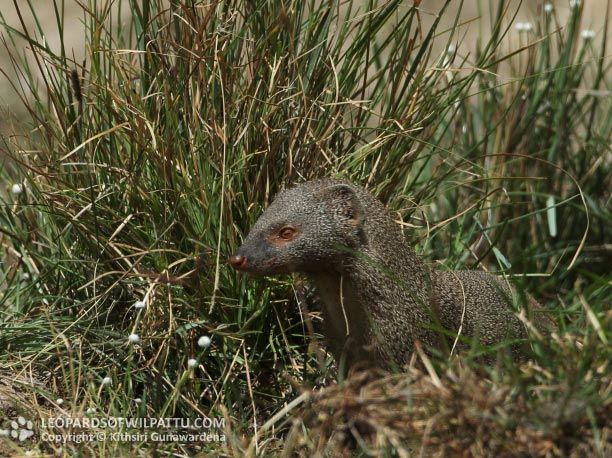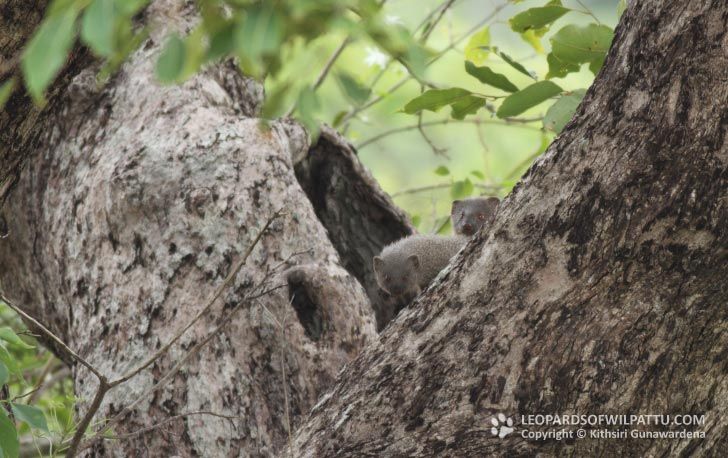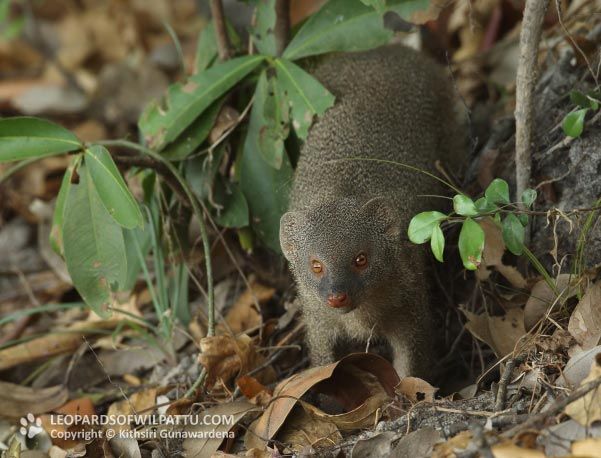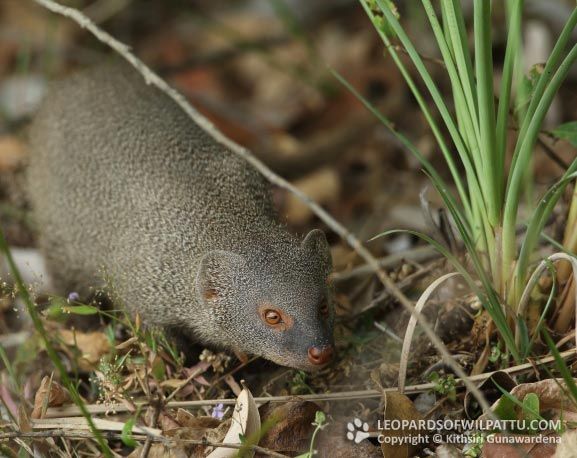
Mammals ‹‹ Go Back
Five subspecies of the Indian Gray Mongoose are recognized and all of them are distributed primarily within the Indian subcontinent. H. e. edwardsii is found in Sri Lanka and South-East India, H. e. carnaticus in South-West India in Karnataka, H. e. moerens in Bangladesh, Bhutan, Central & North-East India and Nepal, H. e. montanus from Saudi Arabia to North-West India and H.e. pallens in Gujarat.
The conservation status of this species is regarded as Least Concerned (National Red list 2012) and it is a species protected under the Fauna and Flora Protection Ordinance as amended by Act No. 22 of 2009.
On the West coast I have not observed this species south of Nawadankulama. In the North I have seen it in the Jaffna peninsula, Mannar Island, Delft Island, Arippu, and Vidaththalthivu. Within the country I have seen it in Dolukanda, Sigiriya, Kandalama, Anuradapura, Polonnaruwa, Rajangana, Habarana, Minneriya and at Wasgomuwa National Park. I have also found it in the Uva region at Nilgala, Gal-oya National Park and at Udawalawa National Park. In the south I have seen it at Yala and Bundala National Parks. I have not seen this species any where in the hills but only in the low-country Dry Zone.
This is a diurnal species and in Wilpattu it is often seen in the open areas around the Villus. They subsist on an omnivorous diet. They are very curious and would soon relax if a vehicle is parked and there is no disturbance. I have seen them, frequently, either in pairs or alone trotting along in open fields, checking all the holes and corners in its path. Occasionally they would stop and raise their heads or sometimes will sit upright and look around. If disturbed they will run fast and disappear in to the forest. On a few occasions I have seen an adult, probably the female, closely followed by two young ones. Until they are old enough to accompany the mother the young are generally left at the den. As they grow up the young become increasingly inquisitive and will begin to explore the area around the den site.
In November 2012 I observed two young Gray Mongoose peeping out of a tree hole of a mature Madan Tree on the road from Kumbuk Wila to Thimbiri Wila. During midday I parked my vehicle close to this tree in order to observe them. They disappeared in to the tree hole as I arrived. I patiently stayed still without even making any conversation with the guide. Within 20 minutes they started peeping from the tree hole and after about 40 minutes both of them were quite relaxed and started to play and examine their surroundings. Every now and then they would stop to raise their heads and would look at the parked vehicle but would resume their antics.

